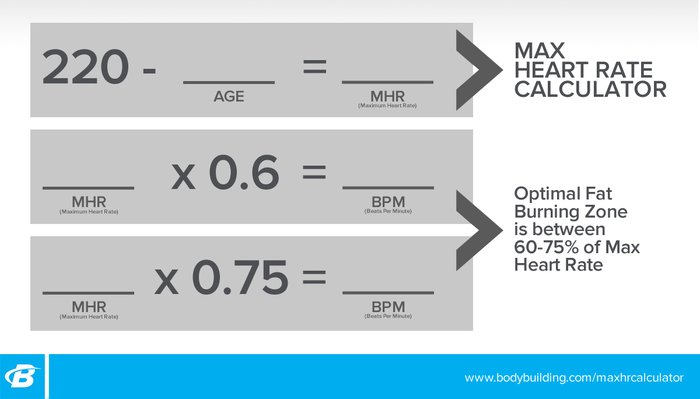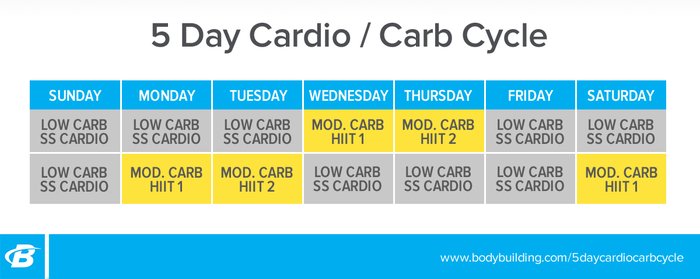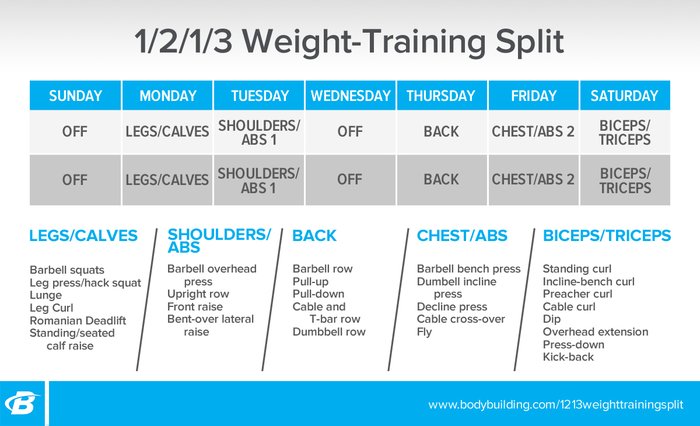The hardest part of the journey to get ripped and bring out your abs may just be the first step. Not only is getting started physically hard, but you also have to deal with conflicting and confusing advice from all sides. That's why we've combined the thinking of some of the top names in physique sports to create this comprehensive six-pack guide.
Think core definition is all about your core workout? Think again. We'll lay out everything you need to know in terms of nutrition, nutrient timing, full-body training, core work, and strategic supplementation to redefine your midsection.
To create the guide, our BPI Sports Panel pooled their best advice, tips, and tricks to help you get shredded and show off your 6 pack like never before. The panel includes:
- Steven Cao, NPC physique competitor
- Courtney King, Ms. Olympia Bikini
- Jose Raymond, eight-time Olympia 202 and Arnold Classic 202 champion
- Whitney Reid, national sales director of BPI Sports
- James Grage, co-founder of BPI Sports and creator of the Rewired training program
This is the one-stop plan you've been waiting for. Let's make it happen!
Step 1: Set Your Calories and Macros
The road to muscular definition all starts with making your nutrition match your goal. One tried-and-true way to figure out the amount of protein, carbs, and fat you'll need is to use Bodybuilding.com's calorie calculator to get values for all your macronutrients. Just enter your age, height, weight, how much physical activity you get every day, and your fat-loss goal.
This calculator distributes the macro amounts to create a high-protein, moderate-carb, moderate-fat diet: 40 percent of your calories come from protein, 40 percent from carbs, and 20 percent from fat. It also builds in a daily caloric deficit that usually ranges from 300-700 calories, depending on your weight and activity level.
The calculator prioritized proteins because they are slower-digesting, help add and maintain muscle mass, and trigger the release of appetite-suppressing hormones. Without enough protein in this diet, you'll feel hungrier and your body will tend to metabolize your hard-earned muscle mass to get the energy it need to follow this program.
Your calculator results will enable you to lose 0.5-1.0 percent of your body weight each week, a safe and sustainable amount that can deliver surprising results over 12 weeks. A 180-pound man, for instance, could lose 0.9 to 1.8 pounds each week, or about 4-8 pounds a month.

If you're like many people, you may drop a few extra pounds the first week, partly because of extra water loss. If your weight doesn't start trending downward after two weeks, you may still be consuming too many calories. If so, adjust your daily protein, carb, and fat intake to get yourself down to a more aggressive weight-loss range of 2-4 percent body weight per week.
Step 2: Build Your Carb-Cycling Plan
You build your abdominals in the gym, but until you get rid of the fat that covers them, no one but you will know they're there. And even you will have your doubts! Our BPI Sports Panel all agree: To drop serious body fat and keep up high-quality training, carb-cycling is a must.
The carb number you got from the macronutrient calculator in Step 1 is for moderate-carb days. On low-carb days, cut that number in half to bring down your daily calorie count. The easiest way to do this is by packing these days with high-fiber, low-calorie carbs like leafy greens, broccoli, and low-sugar fruits. On those days, eat far fewer starchy foods like potatoes, sweet potatoes, yams, and plantains, and shy away from foods made from grains, such as bread, pasta, rice, noodles, cereals, couscous, oats, barley, and tortillas.
Following an extended low-carb diet can affect your energy level, and depending on the approach you take, cause you to burn through valuable muscle mass. To preserve this hard-won tissue, follow a 3/2 carb split. Stick to the low-carb approach for three days, followed by two days of moderate carbs. You'll repeat this five-day cycle about 17 total times over the course of the 12-week program. Be sure to get your carbs from a variety of sources.
On moderate-carb days, you can do the most with the fewest calories by consuming most of your daily carb allowance during your pre- and post-workout meals. This strategy will fuel your workouts and restock your supply of stored muscle glycogen. Remember, this isn't a low-carb approach, it's a carb-cycling approach, so don't succumb to the "less is always better" mindset!
Step 3: Match Your Cardio to Your Carbs
The next step in our Six-Pack Abs program is to crank up the cardio to burn even more calories. These routines are a combination of high-intensity interval training (HIIT) and steady-state (SS) cardio.

High-Intensity Interval Training
HIIT is an effective way to burn more calories in less time. Unlike SS training, HIIT involves alternating intervals of high- and low-intensity exercise, with your heart rate rising and falling appropriately. To optimize fat burning, do the high-intensity intervals at a pace you can't keep up for very long. Follow up with the low-intensity intervals to recover and prepare yourself for the next high-intensity session.
HIIT burns more calories in less time than SS, and it elevates your metabolism so that you burn calories at a higher level for as long as 24 hours post-workout. This elevated fat burning is due to excess post-exercise oxygen consumption, or EPOC, in which your body gives off more heat than normal. Along with burning fat like crazy, this may actually increase your muscle mass.
If you haven't done much of this type of cardio, start with a light warm-up, then follow a work-to-rest ratio of about 1:3, or 1 minute of sprinting followed by 3 minutes of slow jogging. If that's too intense, use 30-second intervals: 30 seconds of sprinting followed by 90 seconds of jogging. Over time, as your cardiovascular fitness improves, aim for a work-to-rest ratio of 1:1.
Steady-State Cardio
When you keep a steady pace and steady heart rate on the elliptical machine or treadmill, you're engaged in steady-state cardiovascular training. Such programs typically range from 30-45 minutes with a heart rate at 60-75 percent of your maximum heart rate (MHR).
This type of cardio gets a bad rap these days, but it has its place in a program. For one, it isn't demanding in terms of recovery—indeed, it can actually help to reduce muscle soreness. Because it isn't incredibly intense, you can do it on low-carb days. And finally, it helps to build endurance, a quality that can help you get more out of both training and life. So ignore the haters who say you have to choose either HIIT or steady-state. For most people, a balance of both is best!
You can estimate your maximum heart rate by using this calculation:

Listed below is a two-week schedule that pairs your carb intake with the appropriate level of cardio. HIIT sessions are paired with moderate carb intake so you'll have a little more energy to do these high-intensity workouts. Follow this pattern for the 90 days.

If you've got a go-to HIIT modality, such as the fan bike, rower, or some other type of sprint, by all means use it. If you're new to HIIT or are looking for a change of pace, alternate these two routines:
What's RPE?
One of the easiest methods to gauge your exercise intensity is the Ratings of Perceived Exertion, a scale that runs from 1-10. RPE allows anyone from beginner to advanced to rate the effort of their workout from easiest (1) to hardest (10), and everything in between.
Yes, RPE is subjective. But it allows you to scale your difficulty in a way that makes sense to you, whether you're running, bicycling, or swimming.

Step 4: Hit the Weights to Spur Your Metabolism
Now it's time to add weight training to help you build and maintain muscle mass—even when you're following a calorie-restricted diet.
The weight workout is based on a 1/2/1/3 split. Each week, you'll be doing five days of weight training, two of which will also rock your abs. The plan starts off with a rest day (on Sunday in our sample plan), followed by two consecutive days of weight training (Monday, Tuesday), another rest day (Wednesday), and then three days of training (Thursday, Friday, Saturday). The schedule is designed to provide optimal recovery between workouts.

Here's how to break up the sets and reps for each of these workouts.
- Weeks 1-4: 3 sets of 8-10 reps, rest 45-60 seconds. Stop the first 2 sets a rep or two shy of failure, and take the final set to failure. Try to add reps or weight each week.
- Weeks 5-8: 3 sets of 12-15 reps, rest 45-60 seconds. Stop the first 2 sets a rep or two shy of failure, and take the final set to failure. Try to add reps or weight each week.
- Weeks 9-12: 3 sets of 8-10 reps, rest 45-60 seconds. For these four weeks, perform different variations of the workout movements wherever possible. Examples: Instead of a back squat, do a front squat. Instead of a barbell bench press, do a dumbbell bench press. Stop the first 2 sets a rep or two shy of failure, and take the final set to failure. Try to add reps or weight each week.
Step 5: Sculpt Your Six-Pack With Ab Workouts
You're peeling away layers of fat through proper nutrition. Your cardio workout has you burning extra calories. Weight training is working your whole body, adding definition and scorching fat. Now it's time to get to the heart of the matter: a major abdominal-development program to chisel that six-pack like it's made out of marble. You'll do two of these workouts every week in addition to your other weight training.
Our Six-Pack Abs program includes 4-5 exercises per workout, starting at moderate reps, and including movements to work not only the upper abs, but also the lower abs, and obliques, two areas that often get overlooked.

Both of the routines start with the most difficult exercise and progress to the easiest. However, the easiest won't be easy, because you'll finish each routine by doing 3 sets of 15-20 reps of a bodyweight exercise. It's going to burn, but it will also lay the foundation for an incredible six-pack. Rest just 30-45 seconds between all sets.
- Weeks 1-4: 3 sets of 12 reps, rest 30-45 seconds. For the final movement, aim for 3 sets of 15-20 reps. Stop the first 2 sets of all exercises a rep or two shy of failure, and take the final set to failure. Try to add reps or weight each week.
- Weeks 5-8: 3 sets of 15-17 reps, rest 30-45 seconds. For the final movement, aim for 3 sets of 25 reps. Stop the first 2 sets of all exercises a rep or two shy of failure, and take the final set to failure. Try to add reps or weight each week.
- Weeks 9-12: 3 sets of 12 reps, rest 30-45 seconds, taking all sets to failure. For the final movement, aim for 3 sets of 15-20 reps. During these weeks, add weight or perform more difficult versions of the bodyweight movements so that you fail at the new target rep range. For example, do reverse crunches on an incline board rather than flat ground, or hanging leg raises with straight legs rather than bent knees. You can also add ankle weights or other resistance to ensure you hit failure at around 12 reps for each set.
Step 6: Supplement to Maximize Fat Loss and Performance
Supplements alone aren't going to give you the six-pack you want. But once you've got the first five items on this list nailed down, a few strategic choices can help maximize your fat-loss efforts, hold on to muscle mass, and have better quality workouts.
If you're going to pick just a couple of supplements to focus on during this time, here are our recommendations:
- Pre-workout: The caffeine and other fatigue-fighting ingredients can help you train hard when calories are relatively low.
- Branched-chain amino acids: BCAAs can help you maintain muscle mass while you get lean.
- Protein: A quality protein powder can help you hit your daily macronutrient numbers, and can promote growth and recovery when taken post-workout.
All That's Left Is the Work!
Getting that washboard is a tremendous accomplishment. But as you can see, it takes more—much more—than the occasional 30 minutes on the floor doing crunches. It takes a plan! And now, you've got one.
Follow it as closely as possible, and make this the year you blow your goals out of the water!

